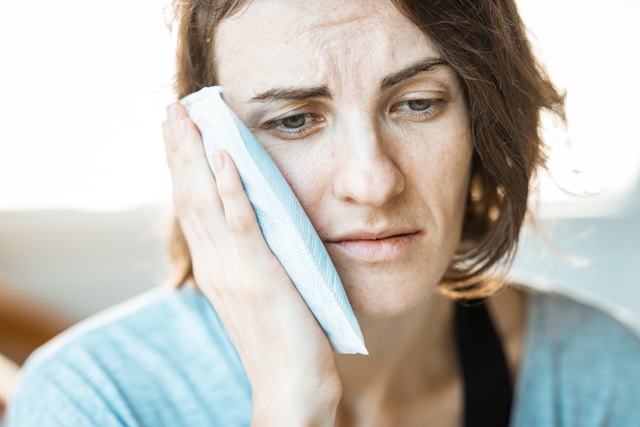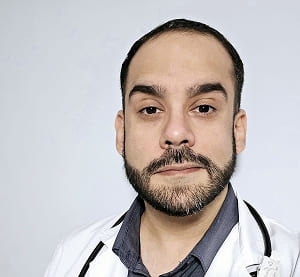

PARACETAMOL CIPLA 1 g EFFERVSCENT TABLETS

Ask a doctor about a prescription for PARACETAMOL CIPLA 1 g EFFERVSCENT TABLETS

How to use PARACETAMOL CIPLA 1 g EFFERVSCENT TABLETS
Introduction
Package Leaflet: Information for the Patient
Paracetamol Cipla 1g Effervescent Tablets EFG
Read the entire package leaflet carefully before starting to take this medication, as it contains important information for you.
- Keep this package leaflet, as you may need to read it again.
- If you have any doubts, consult your doctor or pharmacist.
- This medication has been prescribed to you only, and you should not give it to others, even if they have the same symptoms as you, as it may harm them.
- If you experience side effects, consult your doctor or pharmacist, even if they are side effects not listed in this package leaflet. See section 4.
Contents of the Package Leaflet
- What Paracetamol Cipla is and what it is used for
- What you need to know before taking Paracetamol Cipla
- How to take Paracetamol Cipla
- Possible side effects
- Storage of Paracetamol Cipla
- Package Contents and Additional Information
1. What Paracetamol Cipla is and what it is used for
This medication contains paracetamol, which belongs to the group of analgesic and antipyretic medications, relieving mild to moderate pain and fever.
It can be taken to relieve headache, migraine, neuralgia, toothache, menstrual pain, rheumatic pains, throat pain, and symptoms of cold and flu.
You should consult your doctor if you do not feel better or if your condition worsens after three days.
2. What you need to know before taking Paracetamol Cipla
Do not take Paracetamol Cipla Effervescent Tablets
- if you are allergic to paracetamol or any of the other ingredients of this medication (listed in section 6).
Be cautious with Paracetamol Cipla
Inform your doctor or pharmacist before taking this medication if:
- you have kidney problems?
- you have liver problems, including those due to excessive alcohol consumption.
- you have Gilbert's syndrome (mild jaundice)
- you have hemolytic anemia (abnormal decrease in red blood cells)
- you are asthmatic and sensitive to aspirin (acetylsalicylic acid)
- you suffer from chronic dehydration and malnutrition
- you are taking other medications that contain paracetamol
- if after treatment with paracetamol you still have a fever
- if you have glucose-6-phosphate dehydrogenase deficiency (enzyme deficiency)
- if you are an elderly patient
- if you are taking other medications that affect the liver (see Other Medications and Paracetamol Effervescent Tablets)
Other important information
Do not drink alcohol while taking this medication (e.g., wine, beer, or liquor).
This medication should not be used in patients who weigh less than 50 kg.
If you are an alcoholic or have liver damage, do not take paracetamol unless prescribed by your doctor. If this applies to you, do not take these tablets with alcohol. If you are using other pain medication that contains paracetamol, do not take these tablets without first consulting your doctor or pharmacist.
Never take more tablets of Paracetamol than recommended. A higher dose will not relieve pain more, but may cause serious liver damage. Symptoms of liver damage appear after a few days. It is therefore important to see your doctor immediately if you have taken more tablets of paracetamol than recommended.
Children and Adolescents
This medication should not be used in children, adolescents under 16 years of age, or those weighing less than 50 kg.
Use of Other Medications and Paracetamol Effervescent Tablets
Inform your doctor or pharmacist if you are using or have recently used other medications, including those obtained without a prescription.
Inform your doctor before taking Paracetamol Cipla if you are taking:
- medications to thin the blood (anticoagulants, e.g., warfarin, other coumarins)
- medications to relieve nausea (e.g., metoclopramide, domperidone)
- medications to treat high cholesterol (cholestyramine)
- probenecid (medications to treat high uric acid levels in the blood, gout)
- medications to treat fever or mild pain (acetylsalicylic acid, salicylamide)
- medications such as rifampicin (to treat infections), antiepileptics (such as carbamazepine), or medications to treat convulsions (such as phenytoin, phenobarbital, and primidone)
- medications to treat epilepsy (lamotrigine)
- medications to treat tuberculosis (isoniazid)
- flucloxacillin (antibiotic), due to a serious risk of blood and fluid alteration (metabolic acidosis with high anion gap) that must be treated urgently and may occur particularly in cases of severe kidney failure, sepsis (when bacteria and their toxins circulate in the blood, leading to organ damage), malnutrition, chronic alcoholism, and if the maximum daily doses of paracetamol are used
Paracetamol may prolong the duration of action of chloramphenicol.
Interference with Analytical Tests
Uric acid and blood sugar tests may be altered.
Taking Paracetamol Cipla with Food and Drinks
Taking this medication with food does not affect its absorption.
Pregnancy and Breastfeeding
If necessary, Paracetamol Cipla Effervescent Tablets can be used during pregnancy. You should take the minimum possible dose to reduce pain or fever and use it for the shortest possible time. Talk to your doctor if the pain does not subside or if you need to take the medication more frequently.
Paracetamol passes into breast milk. Breastfeeding women can take paracetamol at the doses indicated in this package leaflet.
Driving and Using Machines
Paracetamol does not affect the ability to drive and use machines.
Paracetamol Cipla Contains Sodium and Aspartame
This medication contains 533.51 mg of sodium (main component of table salt/kitchen salt) in each effervescent tablet. This is equivalent to 26.68% of the maximum recommended daily intake for an adult.
This medication contains 10 mg of aspartame in each effervescent tablet. Aspartame is a source of phenylalanine. It may be harmful if you have phenylketonuria, a rare genetic disease in which phenylalanine accumulates because the body cannot eliminate it properly.
3. How to Take Paracetamol Cipla
This medication is only for adults and adolescents from 16 years of age.
Follow the administration instructions of this medication indicated by your doctor or pharmacist exactly. In case of doubt, consult your doctor or pharmacist again.
This medication is administered orally and can be taken with or without food.
Place the tablet in a full glass of water. Let it dissolve completely and drink the solution immediately after.
If you have any doubts about the correct dose of this medication, consult your doctor.
Adults and adolescents (from 16 years of age) who weigh more than 50 kg:
Take 1 tablet (1 g of paracetamol) every 6 hours, up to a maximum of 4 tablets (4 g of paracetamol) in 24 hours.
This medication is not suitable for
- children and adolescents under 16 years of age.
- adults or adolescents from 16 to 18 years of age who weigh less than 50 kg.
If the pain persists for more than 5 days or the fever for more than 3 days, or worsens or other symptoms appear, discontinue treatment and consult your doctor.
Do not take this medication for more than 10 days without consulting your doctor.
If the pain persists or worsens, you should seek medical help. Do not exceed the recommended dose.
Kidney problems:
In case of kidney problems, your doctor may decide to reduce the dose. The daily dose should not exceed 2 g/day unless your doctor indicates otherwise.
In case of moderate kidney problems, the usual dose is 500 mg every 6 hours.
In case of severe kidney problems, the usual dose is 500 mg every 8 hours.
Liver problems:
In case of liver problems, consult your doctor. Your doctor may decide to reduce the dose.
Elderly patients:
The usual dose for adults is usually appropriate.
You may need a lower dose if:
? you are immobilized or your mobility is greatly reduced,
? you have liver or kidney problems
In case of chronic alcoholism, dehydration, or malnutrition, the dose should not exceed 2 g per day.
Do not divide the 1 g tablet to obtain equal parts with half the dose. Effervescent paracetamol tablets with a lower dose are available.
Do not exceed the recommended dose. Do not administer to children or adolescents under 16 years of age.
If you take more Paracetamol Cipla than you should:
Symptoms of paracetamol overdose in the first 24 hours may include pallor, nausea, vomiting, loss of appetite, and stomach pain. If you or someone you know accidentally takes more than the recommended dose (overdose), you should contact your doctor immediately, even if you feel well, as there is a risk of severe liver damage that may be delayed.
In case of overdose or accidental ingestion, go to a medical center or call the Toxicology Information Service (telephone 91 5620420), indicating the medication and the amount ingested.
If you forget to take Paracetamol Cipla:
If you forget to take a dose, take another as soon as you remember, unless the time for the next dose is near, in which case you should wait until then. The minimum time interval between two doses should be between 4 and 6 hours. Do not take a double dose to make up for forgotten doses.
If you have any other doubts about the use of this medication, ask your doctor or pharmacist.
4. Possible Side Effects
Like all medications, this medication can cause side effects, although not everyone will experience them.
You should stop taking Paracetamol Cipla and consult your doctor if you experience any of the following symptoms:
- Severe skin reactions that cause redness, peeling, blisters, or ulcers (Stevens-Johnson syndrome).
- Skin reactions with redness, peeling, and blisters (toxic epidermal necrolysis).
- Skin rash with blisters and fever (generalized pustular exanthem).
- Generalized rash (may appear as round or oval patches of redness and swelling of the skin).
- Swelling of the face, tongue, or throat, difficulty swallowing, red and itchy inflammation of the skin, or difficulty breathing.
- Stomach ulcers and bleeding (gastrointestinal effects).
Other side effects include:
Rare (may affect 1 in 1,000 patients):
- bleeding or coagulation disorders (platelet alterations), decreased blood cell formation, decreased white blood cells in the blood that can cause serious infections (agranulocytosis), frequent infections due to poor functioning of white blood cells or decreased white blood cells in the blood (leukopenia), decreased platelet count that increases the risk of bleeding or bruising (thrombocytopenia), abnormal destruction of red blood cells that can cause weakness or pallor (hemolytic anemia), decreased blood cells, decreased neutrophils in the blood (neutropenia)
- allergies (excluding swelling of the face, mouth, or hands)
- depression, confusion, hallucinations
- tremors, headache
- abnormal vision
- abnormal fluid accumulation under the skin (edema)
- abdominal pain, diarrhea, nausea, vomiting, bleeding (hemorrhage)
- abnormal liver function, liver failure, liver cell death (necrosis), jaundice
- dizziness, general discomfort or malaise, fever, sedation, interaction with other medications
- overdose and intoxication
Very rare (may affect less than 1 in 10,000 patients):
- liver damage (hepatotoxicity)
- severe allergic reaction (hypersensitivity reaction that requires treatment interruption)
- low blood sugar levels (hypoglycemia)
- cloudy urine and kidney disorders
- skin allergic reaction (erythema multiforme)
- fluid accumulation in the larynx
- decreased red blood cells (anemia)
- severe kidney alteration (interstitial nephritis)
- kidney alteration
- blood in the urine (hematuria)
- inability to urinate (anuresis)
- restlessness
Reporting side effects: If you experience any side effects, consult your doctor or pharmacist, even if they are side effects not listed in this package leaflet. You can also report them directly through the Spanish Medication Surveillance System for Human Use: https://www.notificaram.es. By reporting side effects, you can contribute to providing more information on the safety of this medication.
5. Storage of Paracetamol Cipla
- Keep this medication out of the reach and sight of children.
- Do not use this medication after the expiration date that appears on the packaging after CAD. The expiration date is the last day of the month indicated.
- This medication does not require special temperature storage conditions.
- Keep it in the original packaging to protect it from light and moisture.
- The solution is stable for up to 8 hours at a temperature below 25°C after dissolving the tablet, so the solution should be consumed within 8 hours at most.
- Do not use the tablets if you notice visible signs of deterioration, such as black or brown spots on the tablets, swelling, or discoloration of the tablets.
Medications should not be thrown down the drain or into the trash. Deposit the packaging and medications you no longer need at the SIGRE Point in the pharmacy. If in doubt, ask your pharmacist how to dispose of the packaging and medications you no longer need. This will help protect the environment.
6. Package Contents and Additional Information
Composition of Paracetamol Cipla
The active ingredient is paracetamol. Each effervescent tablet contains 1 g of paracetamol.
The other ingredients are: citric acid (anhydrous) (E330), povidone, sodium bicarbonate (E500), sodium saccharin (E954), anhydrous sodium carbonate (E500), simethicone (E900), polysorbate 80 (E443), aspartame (E951).
Appearance of Paracetamol Cipla and Package Contents
Effervescent tablets are white or almost white, round, flat, with beveled edges and smooth on both sides. Diameter: 25.2 mm.
The aluminum blister packs are packaged in a cardboard box.
The package sizes for the blisters are: 8, 10, 12, 16, 20, 32, 40, 50, 60, 100 tablets.
Not all package sizes may be marketed.
Marketing Authorization Holder and Manufacturer
Cipla Europe NV
De Keyserlei 58-60
Box-19, 2018
Antwerp, Belgium
Local Representative
Cipla Europe NV (Spanish branch)
C/Guzmán el Bueno, 133 Edif Britannia
28003 Madrid
This medication is authorized in the Member States of the European Economic Area under the following names:
ES (Spain) | Paracetamol Cipla 1g Effervescent Tablets EFG |
IE (Ireland) | ParaliefMax 1000 mg Effervescent Tablets |
Date of the last revision of this package leaflet:March 2025
Detailed and updated information on this medication is available on the website of the Spanish Agency for Medicines and Health Products (AEMPS) http://www.aemps.gob.es/

How much does PARACETAMOL CIPLA 1 g EFFERVSCENT TABLETS cost in Spain ( 2025)?
The average price of PARACETAMOL CIPLA 1 g EFFERVSCENT TABLETS in December, 2025 is around 2.5 EUR. Prices may vary depending on the region, pharmacy, and whether a prescription is required. Always check with a local pharmacy or online source for the most accurate information.
- Country of registration
- Average pharmacy price2.5 EUR
- Availability in pharmaciesSupply issue reported
- Active substance
- Prescription requiredYes
- Manufacturer
- This information is for reference only and does not constitute medical advice. Always consult a licensed doctor before taking any medication. Oladoctor is not responsible for medical decisions based on this content.
- Alternatives to PARACETAMOL CIPLA 1 g EFFERVSCENT TABLETSDosage form: TABLET, 1 gActive substance: paracetamolManufacturer: Uxa Farma S.A.Prescription requiredDosage form: TABLET, 1 gActive substance: paracetamolManufacturer: Laboratorios Cinfa S.A.Prescription not requiredDosage form: TABLET, 1 gActive substance: paracetamolManufacturer: Laboratorios Cinfa S.A.Prescription not required
Alternatives to PARACETAMOL CIPLA 1 g EFFERVSCENT TABLETS in other countries
The best alternatives with the same active ingredient and therapeutic effect.
Alternative to PARACETAMOL CIPLA 1 g EFFERVSCENT TABLETS in Польща
Alternative to PARACETAMOL CIPLA 1 g EFFERVSCENT TABLETS in Україна
Online doctors for PARACETAMOL CIPLA 1 g EFFERVSCENT TABLETS
Discuss dosage, side effects, interactions, contraindications, and prescription renewal for PARACETAMOL CIPLA 1 g EFFERVSCENT TABLETS – subject to medical assessment and local rules.















